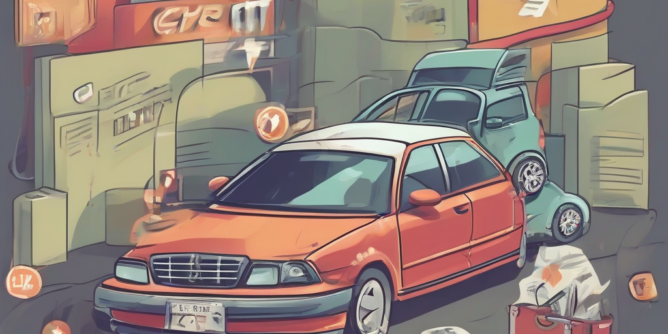
Unlocking Savings: Your Guide to Finding the Cheapest Car Insurance
Finding affordable car insurance can feel like navigating a minefield. With so many providers, policies, and variables, it’s easy to get overwhelmed and end up paying more than necessary. This comprehensive guide will equip you with the knowledge and strategies to find the cheapest car insurance that still provides adequate coverage.
Understanding Car Insurance Costs
Before diving into strategies for saving money, it’s crucial to understand the factors that influence car insurance premiums. These factors can be broadly categorized as:
- Driver Profile: Your age, driving history (accidents, tickets), credit score, and even your occupation can significantly impact your premiums. Younger drivers and those with poor driving records generally pay more.
- Vehicle Type: The make, model, and year of your car play a role. Expensive, high-performance vehicles are typically more expensive to insure due to higher repair costs and theft risk.
- Location: Where you live significantly affects your rates. Areas with high crime rates or frequent accidents generally have higher insurance premiums.
- Coverage Level: The amount and type of coverage you choose directly impact your premium. More comprehensive coverage means higher costs, but also greater protection.
- Deductible: Your deductible is the amount you pay out-of-pocket before your insurance kicks in. A higher deductible lowers your premium, but increases your financial risk in case of an accident.
Strategies for Finding Cheap Car Insurance
Now that you understand the factors influencing your premiums, let’s explore actionable strategies to lower your costs:
1. Shop Around and Compare Quotes
This is arguably the most crucial step. Don’t settle for the first quote you receive. Use online comparison tools and contact multiple insurance providers directly to get a range of quotes. Different companies use different algorithms and assess risk differently, leading to varied premiums.
2. Consider Different Coverage Levels
Carefully evaluate your coverage needs. While comprehensive coverage is ideal, it may not be necessary for everyone. Consider if liability-only coverage is sufficient for your situation, balancing protection with affordability. Remember to check your state’s minimum coverage requirements.
3. Increase Your Deductible
Raising your deductible can significantly lower your premium. However, weigh this carefully against your financial capacity to cover the deductible in case of an accident. Only increase your deductible if you can comfortably afford the higher out-of-pocket expense.
4. Bundle Your Insurance Policies
Many insurance companies offer discounts for bundling your car insurance with other policies, such as homeowners or renters insurance. Bundling can lead to substantial savings.
5. Maintain a Good Driving Record
This is a long-term strategy, but arguably the most impactful. Avoiding accidents and traffic violations is crucial for keeping your premiums low. Safe driving not only saves you money but also keeps you and others safe on the road.
6. Take Defensive Driving Courses
Completing a defensive driving course can demonstrate your commitment to safe driving and often earns you a discount on your insurance. Many insurers offer discounts for completing approved courses.
7. Explore Discounts
Insurance companies frequently offer various discounts, including:
- Good Student Discounts: For students maintaining good grades.
- Multi-Car Discounts: For insuring multiple vehicles under one policy.
- Anti-theft Device Discounts: For vehicles equipped with anti-theft systems.
- Low Mileage Discounts: For drivers who travel less than a certain number of miles annually.
- Safe Driver Discounts: Based on telematics data from usage-based insurance programs.
Be sure to inquire about available discounts when getting quotes.
8. Pay Your Premiums on Time
Late payments can negatively impact your credit score and potentially lead to higher premiums in the future. Set up automatic payments to ensure timely payment and avoid late fees.
9. Consider Usage-Based Insurance (UBI)
UBI programs use telematics devices or smartphone apps to track your driving habits. Safe driving habits, such as avoiding harsh braking and speeding, can earn you discounts. However, be aware of potential privacy concerns.
10. Review Your Policy Annually
Your insurance needs may change over time. Review your policy annually to ensure it still aligns with your circumstances and that you are getting the best possible rate. Don’t be afraid to switch providers if you find a better deal.
Types of Car Insurance Coverage
Understanding the different types of coverage is vital for making informed decisions. Common types include:
- Liability Coverage: Pays for damages or injuries you cause to others.
- Collision Coverage: Pays for damages to your vehicle in an accident, regardless of fault.
- Comprehensive Coverage: Covers damages to your vehicle from events other than collisions, such as theft, vandalism, or natural disasters.
- Uninsured/Underinsured Motorist Coverage: Protects you if you’re involved in an accident with an uninsured or underinsured driver.
- Medical Payments Coverage: Covers medical expenses for you and your passengers, regardless of fault.
Choosing the Right Insurance Provider
Selecting the right insurer involves more than just price. Consider factors such as:
- Financial Stability: Choose a financially sound insurer with a high rating from independent agencies.
- Customer Service: Look for a company with a reputation for excellent customer service and responsiveness.
- Claims Process: Understand how the insurer handles claims and the speed of resolution.
Avoiding Scams and Misleading Information
Be wary of unrealistic promises or high-pressure sales tactics. Legitimate insurers will provide clear and transparent information about their policies and pricing. Always compare quotes from multiple providers and read policy documents carefully before making a decision.
Finding the cheapest car insurance requires research, comparison, and strategic decision-making. By following the strategies outlined in this guide, you can significantly reduce your premiums while maintaining adequate coverage. Remember, prioritizing safety and responsible driving habits remain the best long-term strategy for saving money on car insurance.